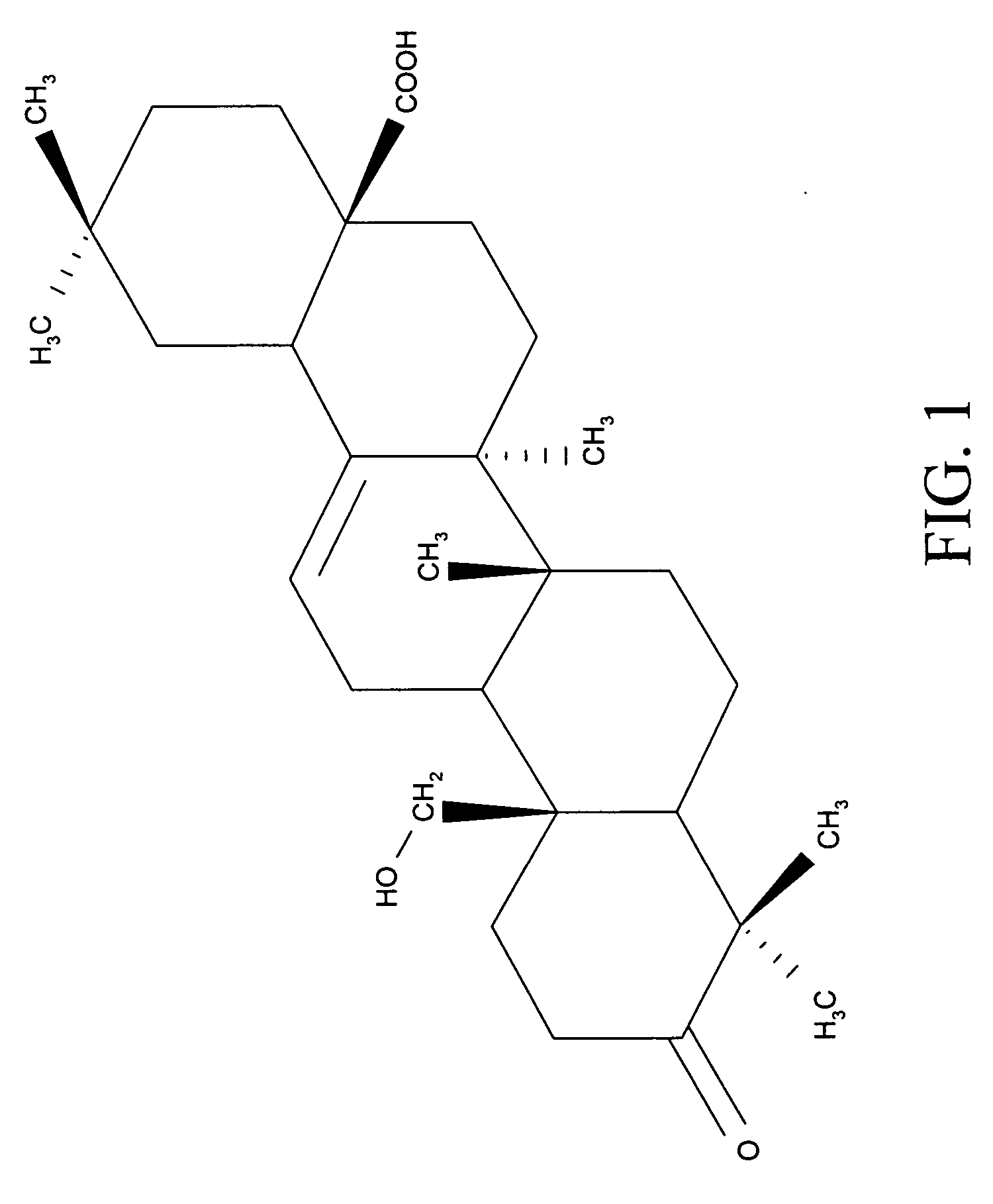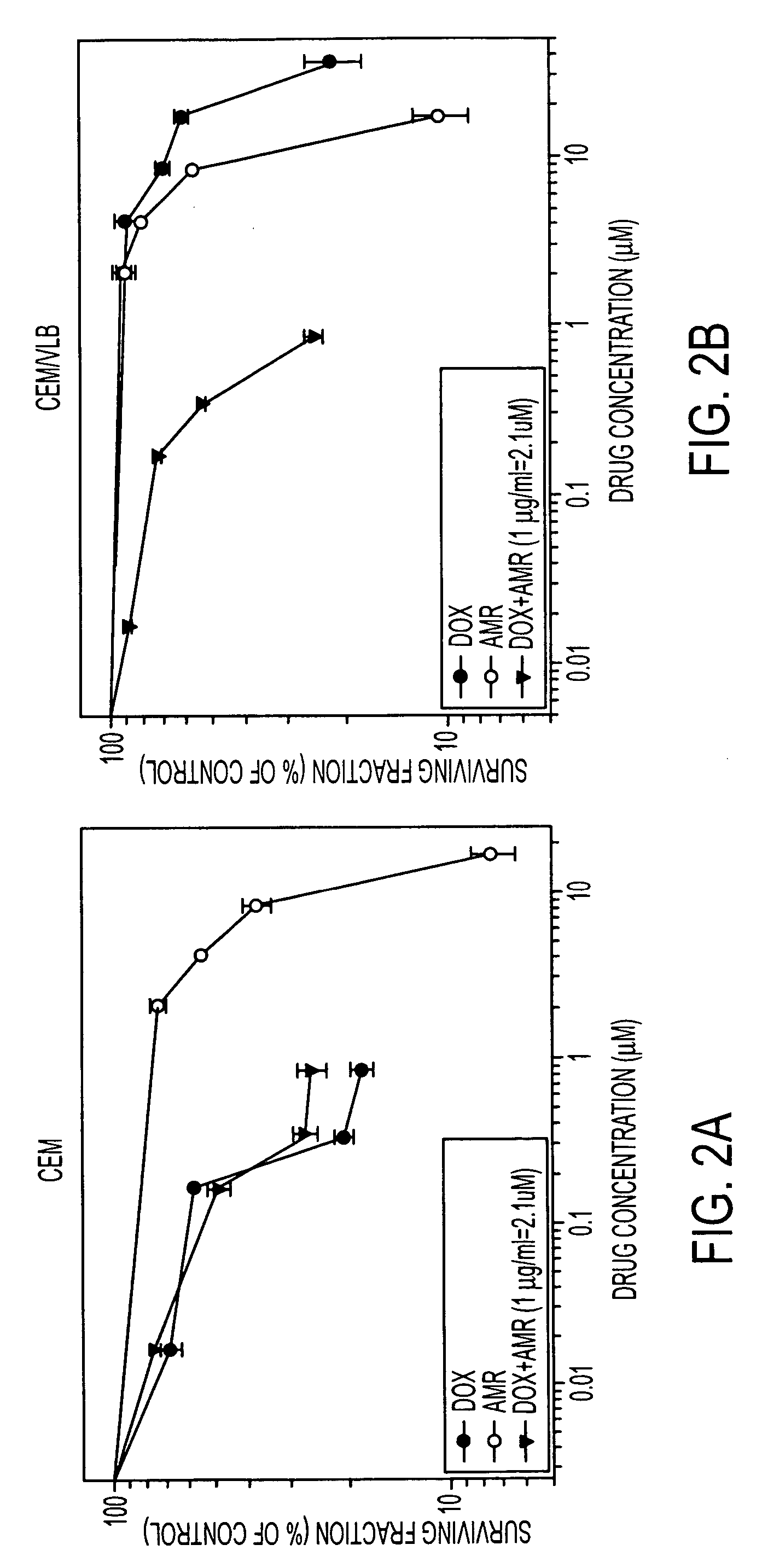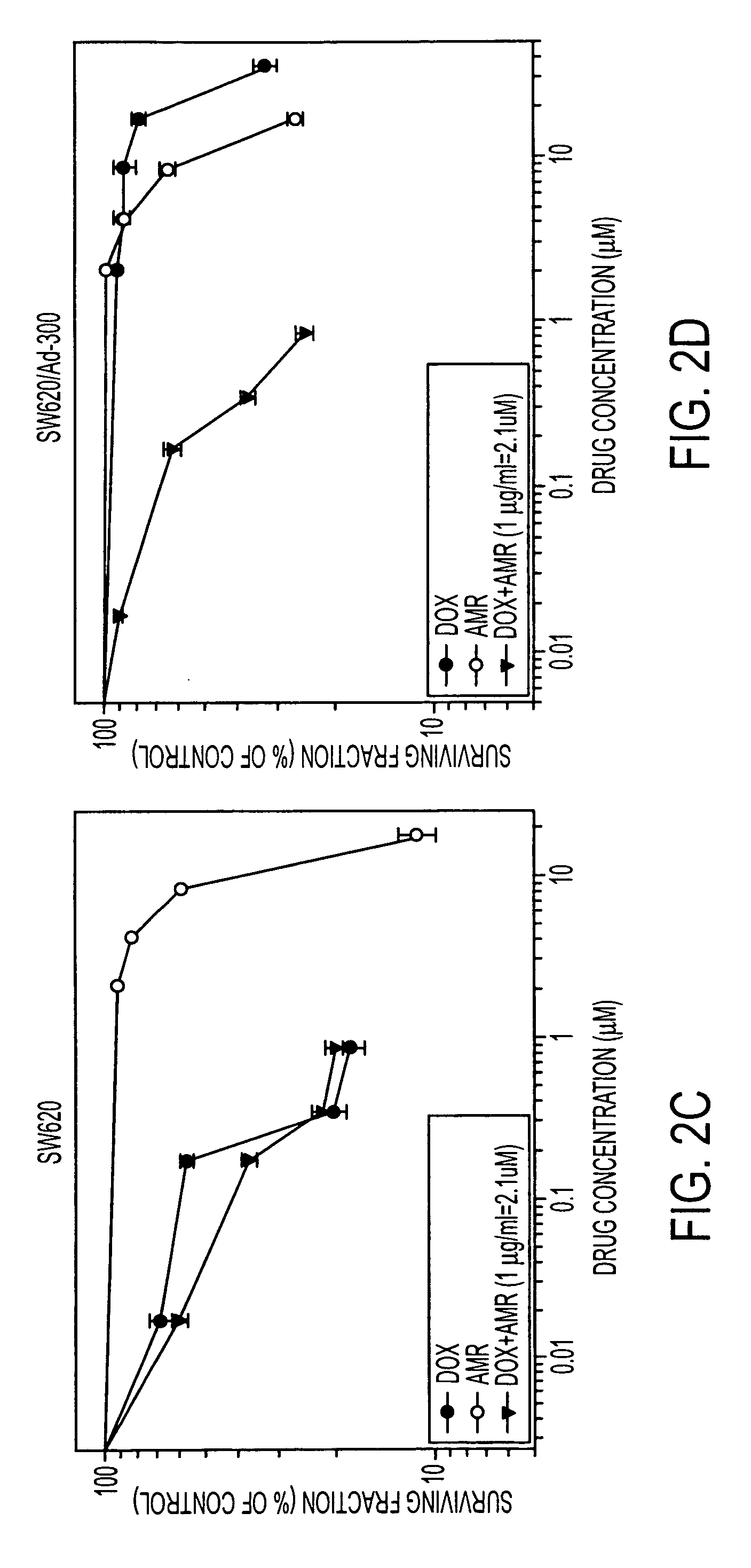Compositions and uses of Amooranin compounds
a technology of amooranin and compounds, applied in the field of compositions and uses of amooranin compounds, can solve the problems of high toxicity, undesirable side effects, toxic or ineffective modulators, etc., and achieve the effect of modulating dox cytotoxicity
- Summary
- Abstract
- Description
- Claims
- Application Information
AI Technical Summary
Benefits of technology
Problems solved by technology
Method used
Image
Examples
example 1
Reversal of DOX Resistance by AMR
[0111] Sensitivity of human leukemia (CEM and CEM / VLB) and colon carcinoma (SW620 and SW620 / AD-300) cells to AMR, DOX and their combination are presented in the dose response curves (FIG. 2). The IC50 values of DOX, AMR and the combination are given in Table 1. The DOX IC50 values (48 hours exposure) for sensitive human leukemia (CEM) and multidrug resistant CEM / VLB cell lines were 0.12 μg / ml and 13.4 μg / ml, respectively, indicating approximately 112-fold resistance in CEM / VLB. Cytotoxicity data (Table 1) showed that CEM / VLB cells were also 1.9-fold resistant to AMR than CEM cells. When CEM / VLB cells were co-incubated with varying concentrations of DOX and 1 μg / ml AMR, DOX IC50 values was decreased from 13.4 to 0.25 μg / ml with a dose modification factor (DMF) of 53.6. However, CEM / VLB cells treated with DOX and AMR (1 μg / ml) combination had about 2-fold residual DOX resistance compared with parental CEM cells. The case was also similar in colon carc...
example 2
Cell Cycle Effects
[0112] Following AMR treatment of tumor cells in vitro for 48 hours, cellular DNA content was analyzed by flow cytometry. DNA histograms in FIG. 3 are of cells exposed to 0-2.5 μg / ml AMR for 48 hours. In all four cell lines, AMR treatment caused an increase in the percentage of cells in G2+M phase and a simultaneous decrease in G0-G1 population in a dose-dependent manner. This AMR-induced G2+M arrest may be a prelude to their entry into apoptosis. The percentage of G2+M phase cells was proportionately higher in drug sensitive CEM and SW620 cell lines compared with drug resistant CEM / VLB and SW 620 / Ad-300 cell lines at every AMR concentrations. In human leukemia cell lines AMR treatment caused an increase in the percentage of G2+M cells from 18.0% to 61.1% in CEM and from 18.0% to 48.7% in CEM / VLB cell lines. Similar cell cycle distribution was also evident in colon carcinoma cell lines. In SW 620 cell line, G2+M percentage ranged from 12.5% to 59.5% as the AMR con...
example 3
Effect of AMR on Cellular DOX Accumulation
[0113]FIGS. 4A-4D shows cellular DOX accumulation in human leukemia and colon carcinoma cells incubated in the presence or absence of AMR. No significant change in the cellular DOX fluorescence was evident in the presence of 1 or 2 μg / ml AMR in sensitive CEM and SW620 cell lines. However, AMR at 1 and 2 μg / ml increased cellular DOX accumulation in a dose-dependent manner in multidrug resistant CEM / VLB and SW 620 / Ad-300 cell lines.
PUM
| Property | Measurement | Unit |
|---|---|---|
| concentration | aaaaa | aaaaa |
| concentrations | aaaaa | aaaaa |
| concentrations | aaaaa | aaaaa |
Abstract
Description
Claims
Application Information
 Login to View More
Login to View More - R&D
- Intellectual Property
- Life Sciences
- Materials
- Tech Scout
- Unparalleled Data Quality
- Higher Quality Content
- 60% Fewer Hallucinations
Browse by: Latest US Patents, China's latest patents, Technical Efficacy Thesaurus, Application Domain, Technology Topic, Popular Technical Reports.
© 2025 PatSnap. All rights reserved.Legal|Privacy policy|Modern Slavery Act Transparency Statement|Sitemap|About US| Contact US: help@patsnap.com



